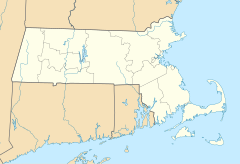| Concord Old Block House | |
|---|---|
 View of house from Lowell Road | |
| General information | |
| Type | House |
| Architectural style | Colonial |
| Location | Concord, Massachusetts |
| Address | 57 Lowell Road |
| Coordinates | 42°27′45″N71°21′04″W / 42.46253°N 71.35118°W |
| Completed | c.1636 (Traditional) c.1675 (MACRIS) [1] |
Concord Old Block House is a historic First Period house at 57 Lowell Road in Concord, Massachusetts.
